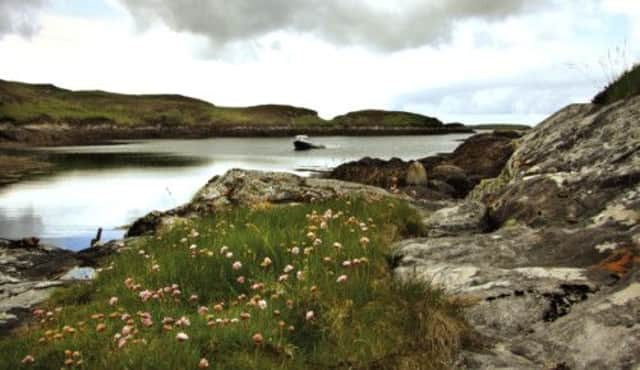Wiay island: Bonnie Prince Charlie hideaway on sale


Wiay, which lies off the coast of South Uist, boasts the cave in which the leader of the 1745 Jacobite rebellion concealed himself for several days while being sought by British government forces.
The island has been uninhabited for over a century, although the current owners – the Chettle family from England, who bought it in 2003 – used it for holidays and summer camping. But the new owners will not have to make do with life underground or under canvas. A ruined croft, which was once home to ten islanders, has planning permission for a new home that will provide spectacular views of the island’s surroundings.
Advertisement
Hide AdMark Mitchell, head of selling agents Bell Ingram, said: “An area of land with as much history and beauty as the Island of Wiay does not come up on the market very often. It has a fantastic back story, once being the hidey-hole for Bonnie Prince Charlie, which is paralleled by the stunning views of the surrounding Benbecula and South Uist islands, making it the ideal location for those looking to totally escape the rat race.”
The 970-acre island also has sporting rights, and in recent years the land has been used for woodcock and duck shooting. There is also red deer stalking and fishing.
Located half a mile south-east of Benbecula, Wiay is accessed by private boat from Petersport to a sheltered bay close to the ruined cottage on the west side of the island.
The island is predominately heather clad, with a small number of freshwater lochs, rising to 335ft at Beinn a’Tuath. But it is best known for playing its part in the escape of the prince following the defeat of his Jacobite forces at Culloden in 1746.
In 1745, Charles travelled to the Highlands to raise the Scottish clans in rebellion against the current British monarch – King George II, of the house of Hanover.
His plan was to make his father James Stuart, the “Old Pretender”, king.
Advertisement
Hide AdBut after Culloden, he fled west and was transported to the Outer Hebrides by boat in an eight-hour voyage in atrocious conditions. He eventually sought shelter in a cave on Wiay, now known as “Prince Charlie’s Rest”, while his followers kept watch for the British navy. He was brought fresh clothing and it appears this was the first time the prince wore Highland dress.
Prince Charles spent the next few weeks in hiding, employing several disguises. He lived like a commoner and ate drammach, a type of oatmeal mixed raw with seawater. After two months on the run, he met Flora MacDonald on South Uist and a plan was hatched to return him to Skye and then to the mainland. The Prince was disguised as Flora’s “Irish Maid” – “Betty Burke” – and they made the famous journey by rowing boat to Skye, evading capture on the way.
Advertisement
Hide AdMacDonald then aided the prince in his escape to Portree, where they parted company never to meet again. After several more weeks in hiding, the prince obtained passage to France and escaped, pledging to his remaining followers that he would return with an army.
Wiay has since slipped back into obscurity. One former resident, William Buie, left the island in 1825 to become a banker in Canada. Although the island was logged as having six inhabitants in 1861, it was deserted by the turn of the 20th century.
Despite the general downturn in property prices, Scottish islands are still popular on the international market. In 2011, Taransay, also one of the Western Isles, and the largest unpopulated island in Britain, was put up for sale. The island featured on the reality TV show Castaway, but a bid to buy it by TV personality Ben Fogle, who appeared on the show, failed after it was snapped up by a local landowning family on Harris for £2 million within two weeks.
Balnagowan, near Oban, stretching to just 36 acres and with planning permission for a bothy, sold last year for £300,000.
Meanwhile, 380-acre Shuna, located in Loch Linnhe and featuring a seven-bedroom detached house, a sheep farm and several cottages, sold for £1.85m in 2012 to an overseas investor.
Sanda, off the coast of the Mull of Kintyre, was originally put on the market for £3.2m but the 400-acre island only sold to a Swiss investor when the price was dropped to £1.2m.
Twitter: @AlistairMunro1